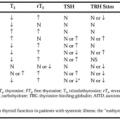LONG-TERM REGULATION OF APPETITE AND ENERGY HOMEOSTASIS
Part of “CHAPTER 125 – APPETITE“
Long-term regulation of appetite serves to compensate for temporary inadequacies in food intake and to control energy homeostasis (see Chap. 129) so that body weight is maintained at a certain setpoint. The mechanisms controlling energy homeostasis involve hormones secreted in proportion to the size of the body adipose tissue mass and the number of central nervous system (CNS) targets on which they act (see Fig. 125-1).
ADIPOSITY SIGNALS
Leptin and insulin are both peripheral signals proportional to adiposity that act on the same brain mechanisms to decrease food intake and increase energy output. These adiposity signals provide support for the lipostatic hypothesis (see Table 125-1).
LEPTIN
The protein product of the obese (ob) gene has been cloned and a 167 amino-acid hormone produced in adipose tissue discovered.12 This hormone, which acts on the hypothalamus to reduce food intake and increase energy expenditure, has been named leptin, from the Greek word for thin. Obese ob/ob mice have a mutation of the ob gene resulting in a lack of active leptin. Another type of obese and diabetic mice has a mutation of the diabetes (db) gene, which produces a defective leptin receptor.13 This leads to a compensatory increase in ob gene expression and in plasma leptin levels. Consequently, leptin administration has no effect on db/db mice, whereas it reverses obesity in ob/ob mice. Weight loss is entirely due to loss of fat mass.
Stay updated, free articles. Join our Telegram channel

Full access? Get Clinical Tree





